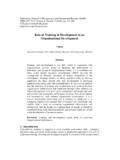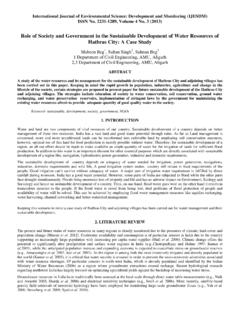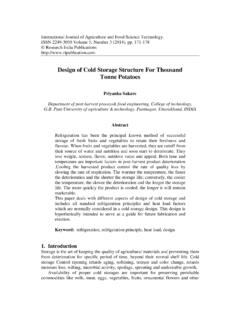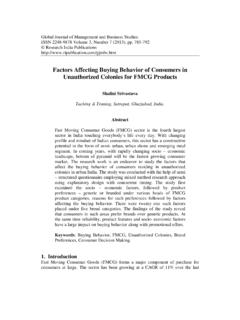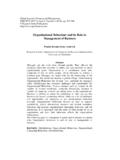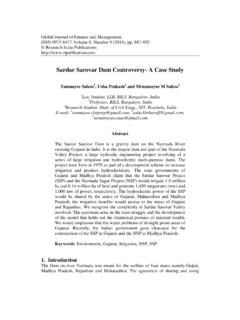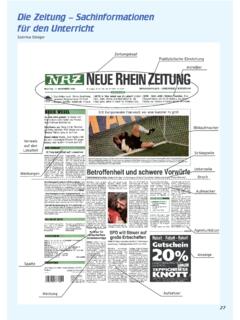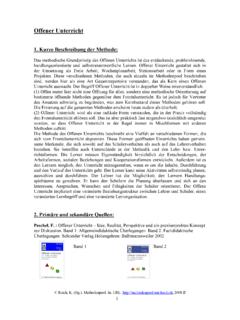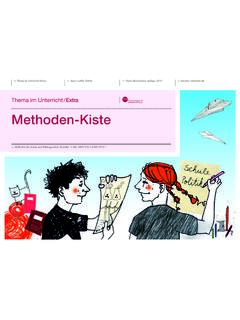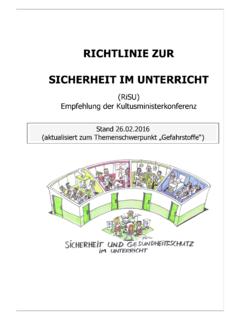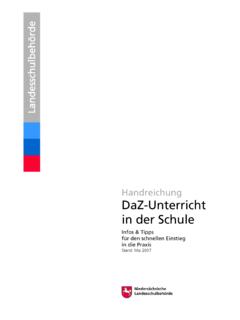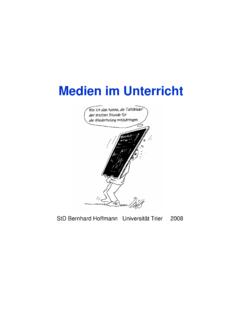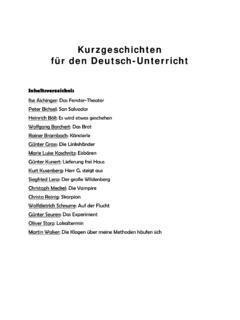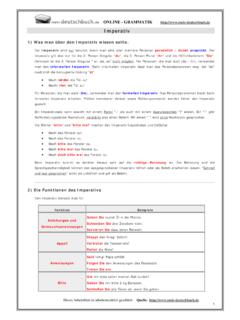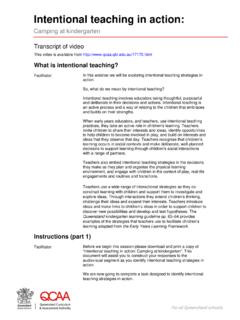Transcription of A Study on Course Timetable Scheduling using Graph ...
1 International Journal of Computational and Applied Mathematics. ISSN 1819-4966 Volume 12, Number 2 (2017), pp. 469-485 Research India Publications A Study on Course Timetable Scheduling using Graph Coloring Approach Runa Ganguli1 and Siddhartha Roy2 1 Department of Computer Science, The Bhawanipur Education Society College, Kolkata,West Bengal, India 2 Department of Computer Science, The Bhawanipur Education Society College, Kolkata,West Bengal, India Abstract In any educational institution, the two most common academic Scheduling problems are Course timetabling and exam timetabling. A schedule is desirable which combines resources like teachers, subjects, students, classrooms in a way to avoid conflicts satisfying various essential and preferential constraints.
2 The Timetable Scheduling problem is known to be NP Complete but the corresponding optimization problem is NP Hard. Hence a heuristic approach is preferred to find a nearest optimal solution within reasonable running time. Graph coloring is one such heuristic algorithm that can deal Timetable Scheduling satisfying changing requirements, evolving subject demands and their combinations. This Study shows application of Graph coloring on multiple data sets of any educational institute where different types of constraints are applied. It emphasizes on degree of constraint satisfaction, even distribution of courses, test for uniqueness of solution and optimal outcome.
3 When multiple optimal solutions are available then the one satisfying maximum preferential conditions is chosen. This paper solely focuses on College Course Timetabling where both hard and soft constraints are considered. It aims at properly coloring the Course conflict Graph and transforming this coloring into conflict-free timeslots of courses. Course Conflict Graph is constructed with courses as nodes and edges drawn between conflicting courses having common students. Keywords: Graph Coloring, Course Timetable Scheduling , Hard Constraints, Soft Constraints, Course Conflict Graph 470 Runa Ganguli and Siddhartha Roy 1.
4 INTRODUCTION In the year 1736, Graph theory originated from the Konigsberg bridge problem pointed out by mathematician Euler which later led to the concept of Eulerian Graph [4]. In the same decade, Gustav Kirchhoff established the concept of a tree, a connected Graph without cycles which was used in the calculation of currents in electrical networks or circuits and later to enumerate chemical molecules. In 1840, Mobius came up with the idea of complete Graph and bipartite Graph (section ). In 1852, Thomas Gutherie found the famous four-color problem. The first results about Graph coloring deal exclusively with planar graphs in the form of the coloring of maps [3].
5 Even though the four-color problem was invented it was solved only after a century by Kenneth Appel and Wolfgang Haken [1]. In 1890, Heawood proved the five-color theorem, saying that every planar map can be colored with no more than five colors [2]. In 1912, George David Birkhoff to Study coloring problems in algebraic Graph theory introduced the chromatic polynomial [4][5]. Graph Coloring has many real-time applications including map coloring, Scheduling problem, parallel computation, network design, sudoku, register allocation, bipartite Graph detection, etc [3][4]. Graph coloring has considerable application to a large variety of complex problems involving optimization [11] In particular, conflict resolution, or the optimal partitioning of mutually exclusive events, can often be accomplished by means of Graph coloring.
6 Examples of such problems include Course or examination Timetable Scheduling [6][13][14]. While constructing schedule of courses at a college or university, it is obvious that courses taught by the same professor and courses that require same classroom must be scheduled at different time slots. Furthermore, a particular student or group of students may be required by a curriculum to take two different but related courses ( , physics and Mathematics) concurrently during a semester. In such cases too, courses need to be scheduled in a way to avoid conflicts. Thus, the problem of determining minimum or reasonable number of time slots that can successfully schedule all the courses subject to restrictions is a typical Graph coloring problem [14][16][17].
7 This paper is concerned with the problem of Course Timetable Scheduling , where Graph coloring can provide an algorithm [9] which will prevent or at least minimize conflicting schedules. Thus, optimal solutions to such problems may be found by determining minimal colorings for the corresponding graphs. Unfortunately, this may not always be accomplished in polynomial time. As the Graph coloring problem is known to be NP-complete [4][12] there is no known algorithm which, for every Graph , will optimally color the nodes of the Graph in a time bounded by a polynomial in the number of nodes.
8 Many Graph coloring algorithm such as the Saturation algorithm, the Recursive Largest First algorithm, Simulated Annealing algorithm, Greedy algorithm, are NP complete [4][12]. A Study on Course Timetable Scheduling using Graph Coloring Approach 471 Basic Concepts of Graph Theory: A Graph G is an ordered triplet (V(G), E(G), ф) consisting of a non-empty set V of vertices or nodes, E is the set of edges and ф is the mapping from the set of edges E and the set of vertices V. In a bipartite Graph (or bigraph) (Fig. 1) the set of vertices V can be partitioned into two disjoint sets V1 and V2 such that every edge of the Graph connects a vertex in V1 to one in V2, V1 and V2 are independent sets.
9 V1 V2 Fig. 1 Bipartite Graph Given a Graph G, a vertex coloring of G (Fig. 2(a)) is a function f: V C where V is a set of vertices of the Graph G and C is the set of colors. It is often both conventional and convenient to use numbers 1, 2, ..n for the colors. Proper k-coloring [4][5] of G is a coloring function f which uses exactly k colors and satisfies the property that f(x) f(y) whenever x and y are adjacent in G. The smallest number of colors needed to color G is known as it's chromatic number X(G)[4][5]. A Graph that can be assigned a proper k-coloring is called k-colorable, and it is k-chromatic if it s chromatic number is exactly k.
10 The chromatic polynomial counts the number of ways a Graph can be colored using no more than a given number of colors. Edge-coloring of graphs (Fig. 2(b)) is similar to vertex-coloring. Given a Graph G, an edge-coloring of G is a function f0 from the edges of G to a set C of elements called colors. Fig. 2(a) Vertex Coloring 2(b) Edge Coloring 472 Runa Ganguli and Siddhartha Roy We have studied that for every edge coloring problem there exists an equivalent vertex coloring problem [4] of its line Graph . Given a Graph G, its line Graph L(G) is a Graph such that each vertex of L(G) represents an edge of G, vertices of L(G) are adjacent if and only if their corresponding edges share a common endpoint (are incident) in G.
